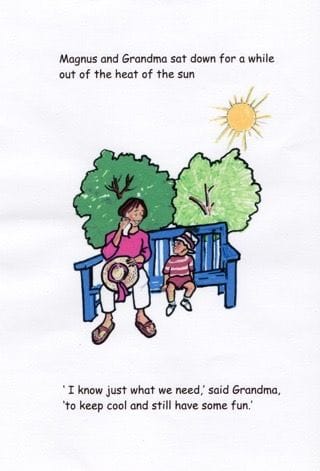
The Art of Writing Realistic Dialogue
Pauline Rowson
Dialogue is a critical element of characterisation. No matter how much research I do beforehand when creating characters, they don’t come alive until I start to put dialogue into their mouths & they begin to interact with each other. Many beginner writers find it difficult to write realistic & believable dialogue. This is usually because they are not in the minds of the characters they have created. Dialogue is there to give life to your characters but a few words of caution: Use dialect sparingly. Dialect can convey your character & give local colour to your story, novel or passage, but too much is wearing on the reader. Likewise swearing. Many readers tell me they dislike excessive swearing in novels, a view I share. Swearing needs to be in keeping with the character & the situation. Just beware of over doing it. Writing believable dialogue in fiction is a long way from dialogue in ‘real life’ which is peppered with a chaos of ums & ahs, you knows, basicallys & many more superfluous words & fillers. If used in a novel, or short story, these fillers only serve to slow the flow & frustrate the reader. So be ruthless, cut them out. Dialogue helps move the plot forward & impart necessary information. It breaks up the narrative & improves the look on the page. It can also add speed, depth & emotion to a passage, but must be there for a purpose- to create & develop the scene. Examine your passages of narrative & ask can this be told in dialogue? There are alternatives to ‘said’ that can also convey action, your character’s feelings & their personality & emotions, eg snapped, sniped, chanted, mused, exclaimed. But don’t overload with these, & ask if they are really necessary. Bits of action tacked on to speech can also help. You don’t have to name the character who is speaking after every line of dialogue. In some passages it is obvious but ensure the readers doesn’t lose track of who is speaking. Start each new character’s dialogue on a new line so as not to confuse the reader. You can also add names into the dialogue. Here is an example of the above points taken from the first page of my 1950 set mystery introducing Inspector Alun Ryga ‘Death In The Cove’:
‘Inspector Ryga?’
‘Yes.’
‘Sergeant Jack Daniels. Like the whisky, I’m an acquired taste.’
Daniels’ handshake was firm & dry. Ryga returned the smile. ‘I bet you’ve said that a few times.’
‘Hundreds. I don’t mind. It helps to break the ice.’ Daniels opened the boot of the Wolseley & Ryga placed his holdall & the brown briefcase inside.
‘Where to, skipper? Sorry, sir.’
‘RAF?’
‘Yes. Not for long though, the war was over before I could do much damage. You?’
‘Prisoner of War, Germany.’
‘Oh. Sorry.’
‘Why? You didn’t start the war, did you?’
‘No, but . . . Sorry, sir, I didn’t mean . . .’
‘Forget it, & you can call me skipper if you prefer. Although your superintendent might not like that.’
‘He’s laid up with a broken ankle.’
‘I know.’ Ryga climbed in.
‘Of course, sorry. There I go again apologizing.’
‘Do I make you nervous?’ Ryga swivelled to study Daniels.
‘Not really, well, a bit, yes. Never had Scotland Yard down here on a case. In fact, I’ve never met a detective from Scotland Yard before & neither has anyone else around these parts.’
Not one single ‘said’ used there, the characters aren’t named on every line, & lots of action included, as well as information conveyed.
More Points on Dialogue
Ed Lane,Spilsby
Beware of adverbitis. That is when a character speaks with he/she said and an adverb is added: ‘she said sweetly’, ‘he said jovially’. This becomes irritating if used to excess and can be avoided by expressing the character’s mood in the narrative before the dialogue begins. Davis was in a foul temper and he snapped, rather than Davis said snappily.
It’s also good to avoid too many variations of ‘said’. The American writer Elmore Leonard went as far as to say never use a verb other than ‘said’ after dialogue. This may be a little too severe a stricture but the point is a good one. Too many variations such as ‘grated’, ‘laughed’, ‘smiled’, ‘spat’, ‘croaked’, ‘yawned’ and ‘sniggered’ begin to get noticed as the author’s voice intruding and takes the reader’s mind off the story. They begin to wonder what verb will come next. Readers do not notice the plain ‘said’ anywhere near as much.
Another point which often crops up is the use (or omission) of a comma before a name in dialogue. Simply put, it could change the meaning of a sentence. “Call me John.” Call me, John.” In the first instance John is asking to be called by his Christian name, in the second, the speaker is asking John to telephone him; the difference is the comma. The context perhaps will give a clue but it’s best to beware of the pitfall. If the speaker is addressing someone by name it should be preceded by a comma. “Are you okay with this man, John?”
Ed Lane has published 13 military thriller novels: the ‘Going Dark’ series, the ‘Fields of Fire’ trilogy and the ‘Another Day’ series. He has also published a western novella ‘Bannerman’. He makes a donation to a military charity for each book sold. All books are available in ebook format from Amazon with some titles in paperback.


